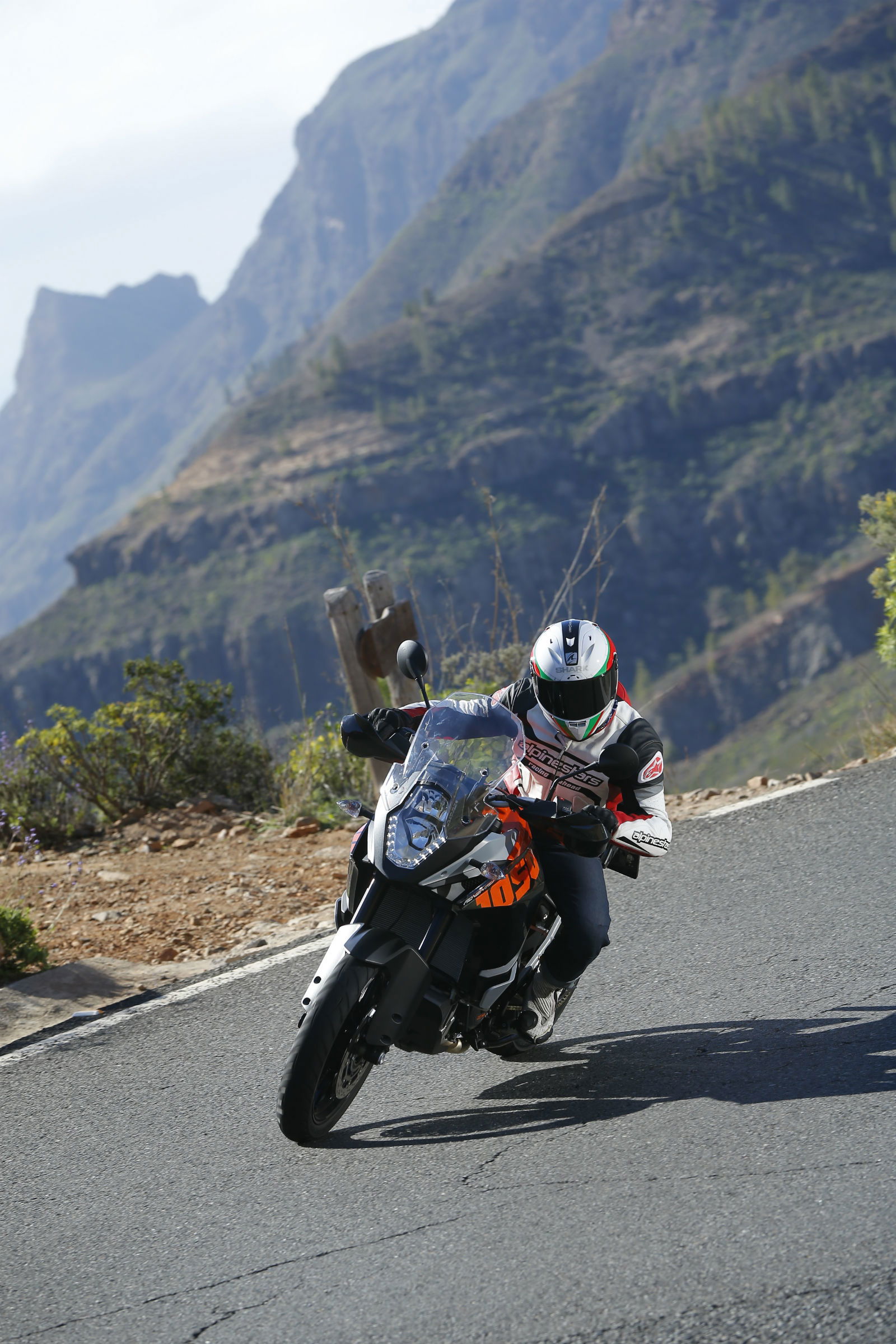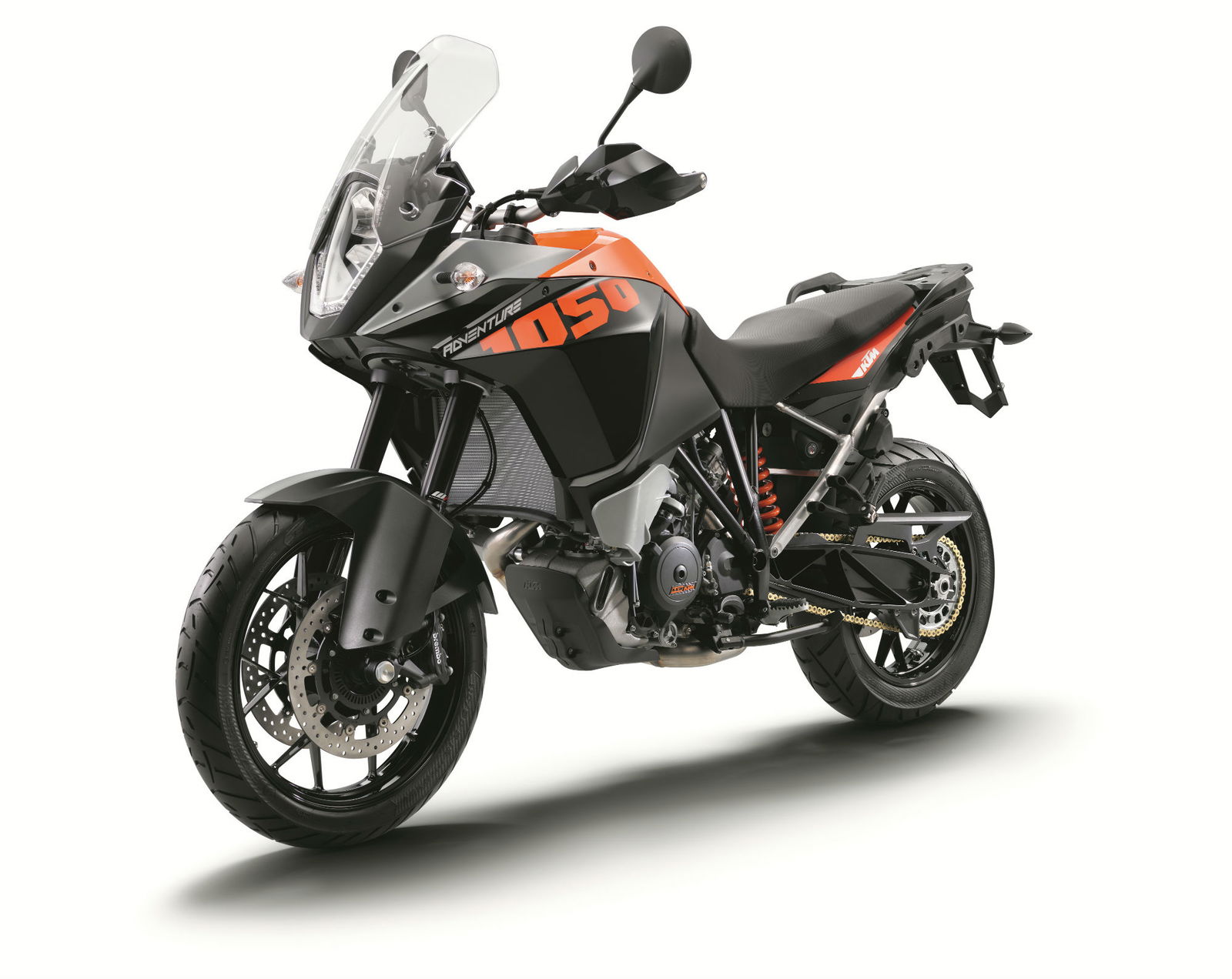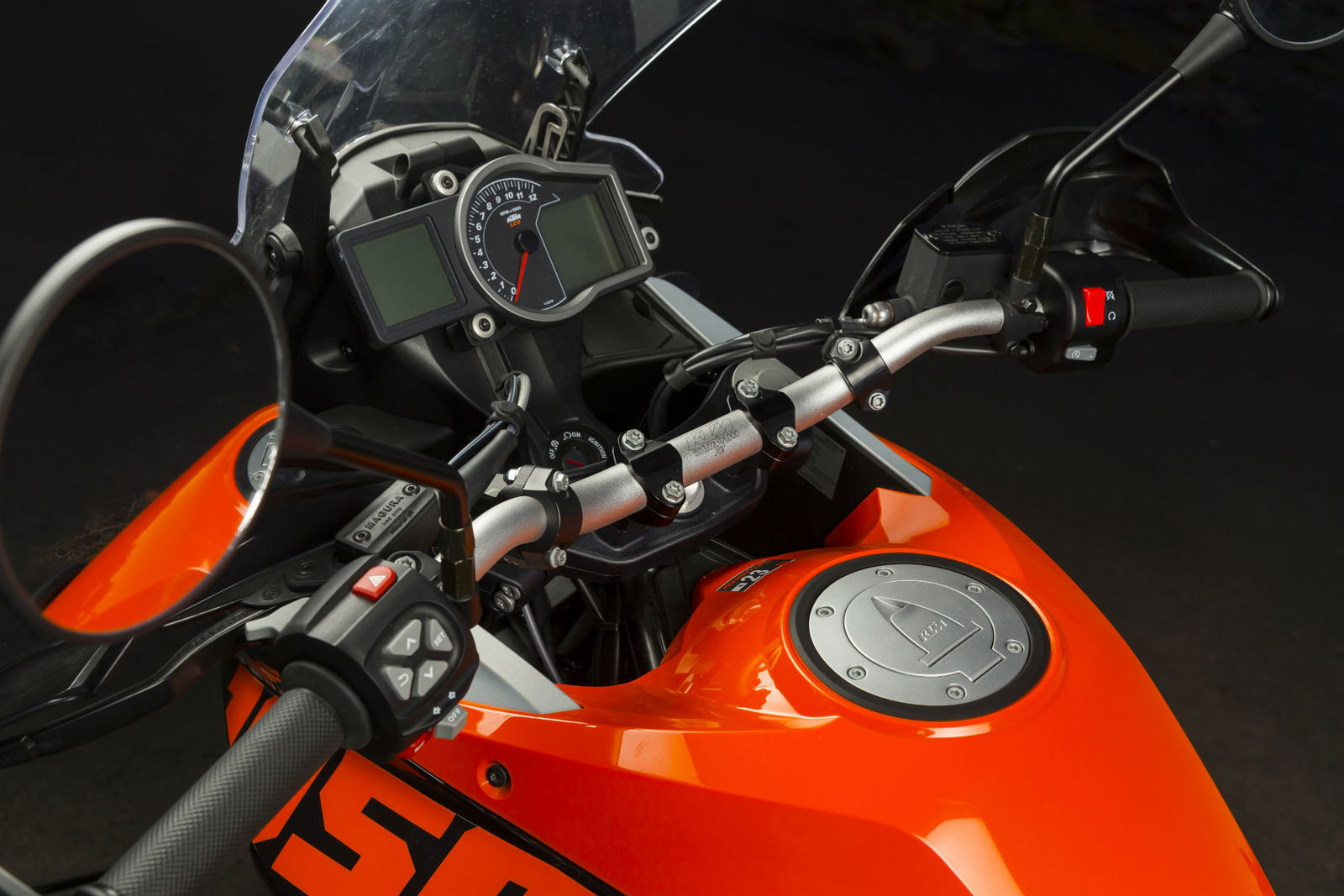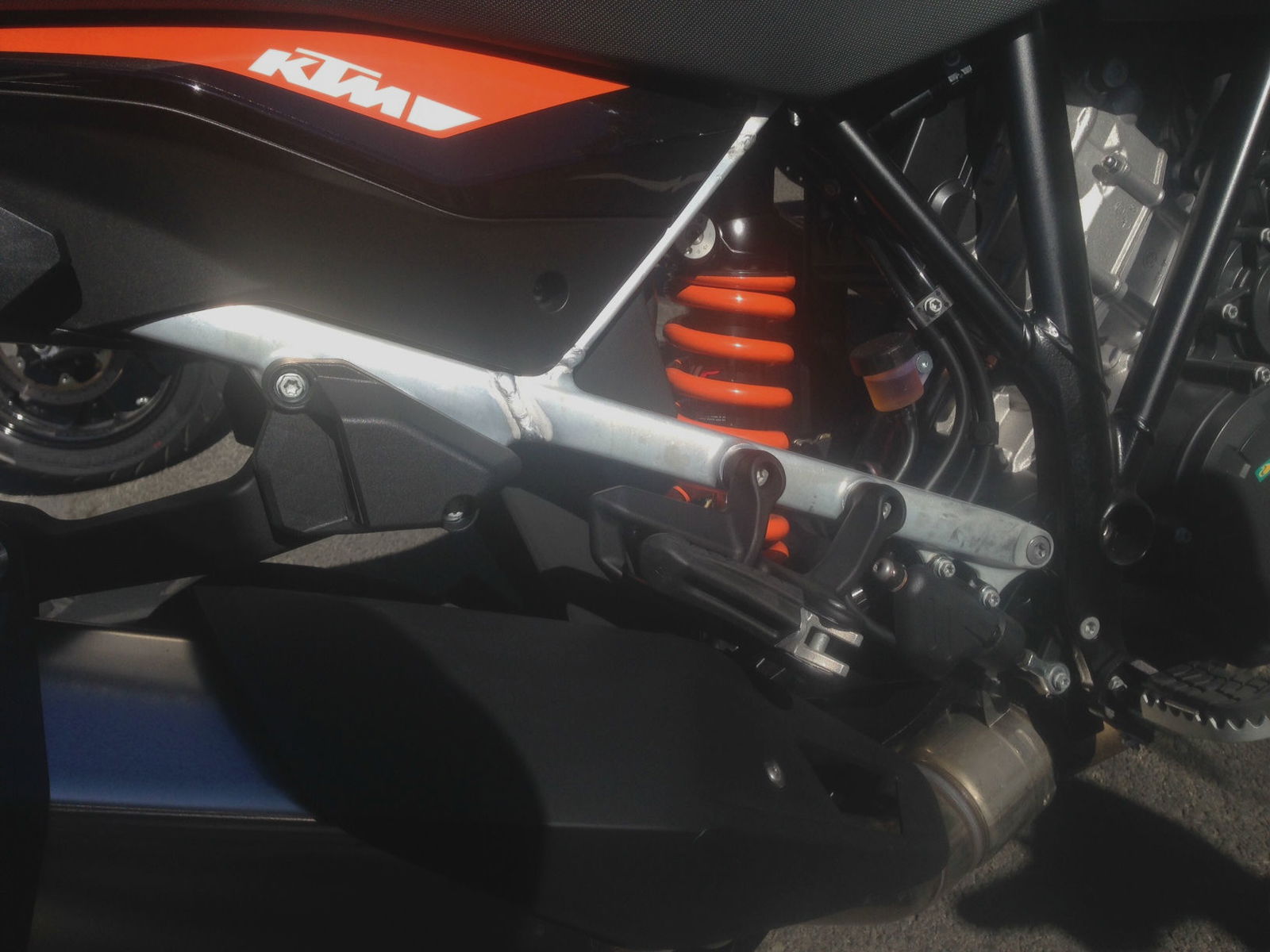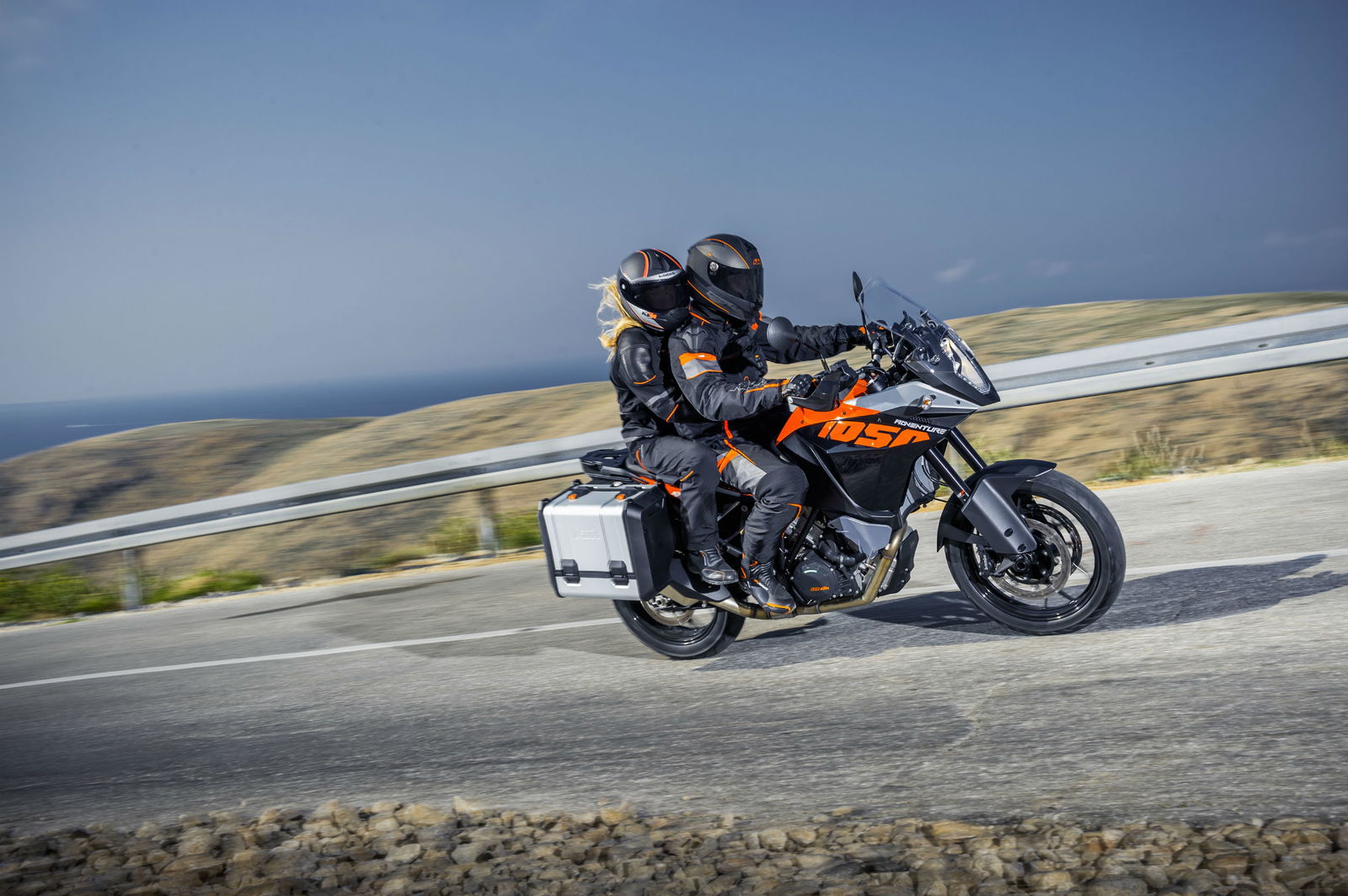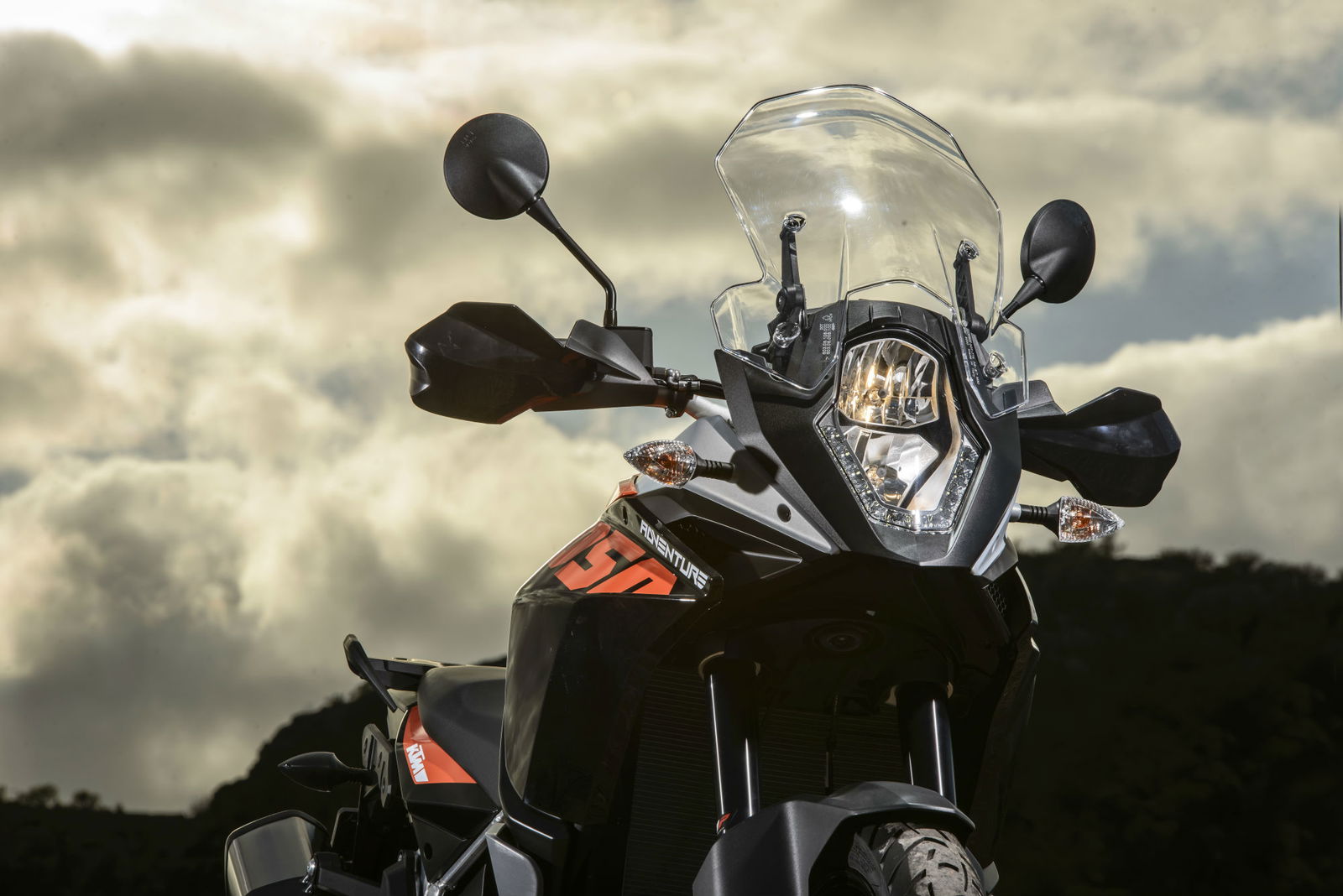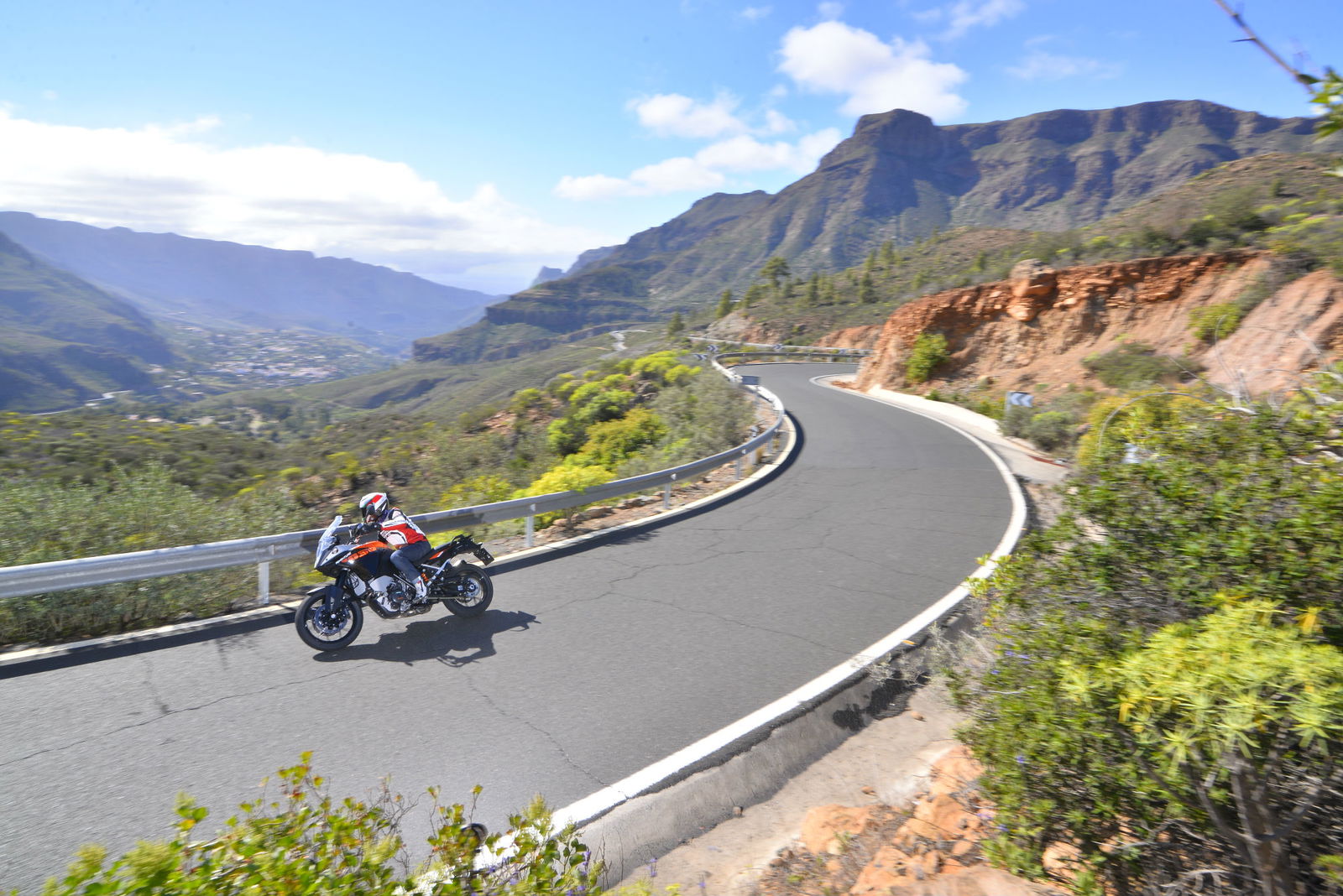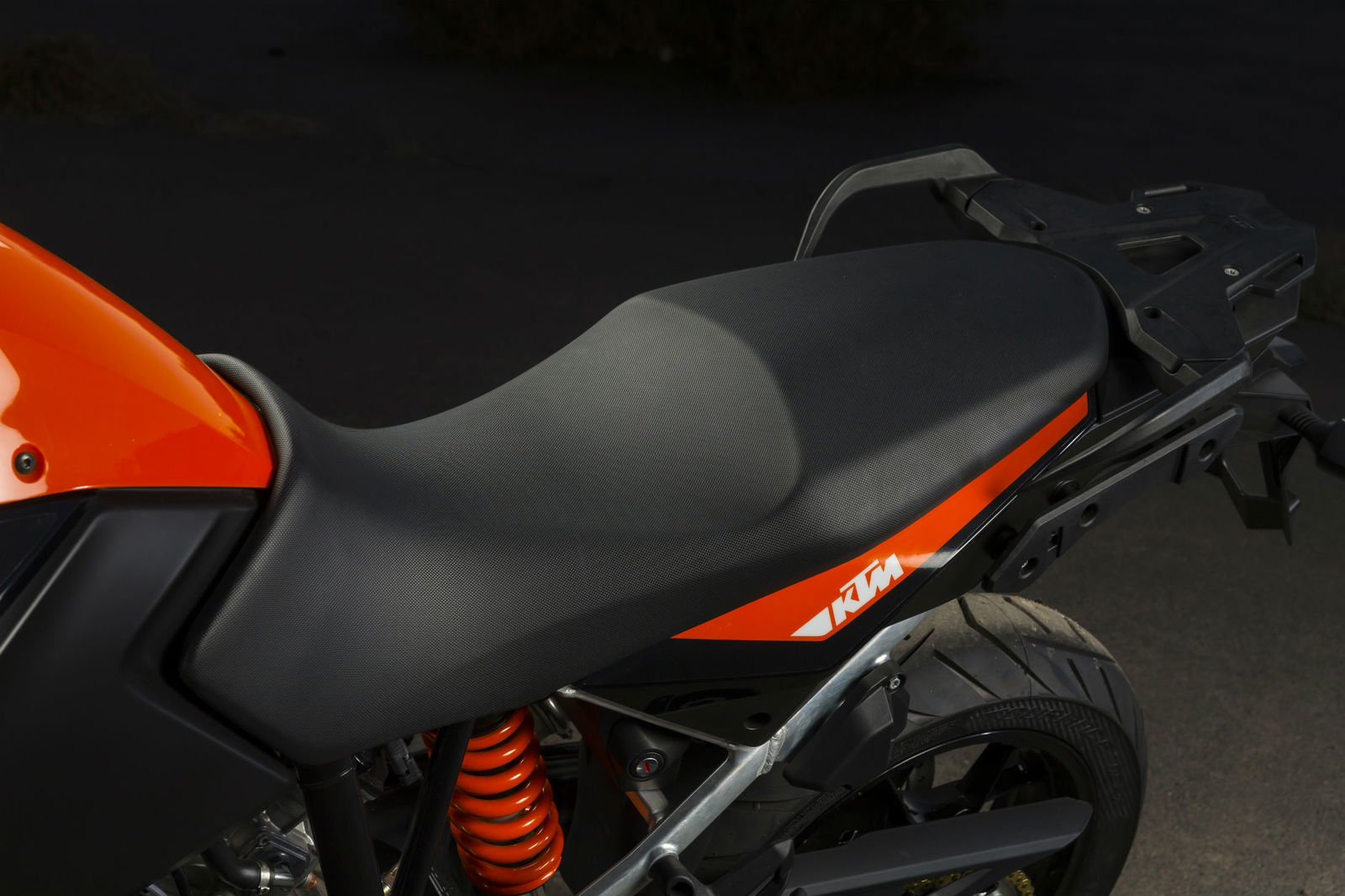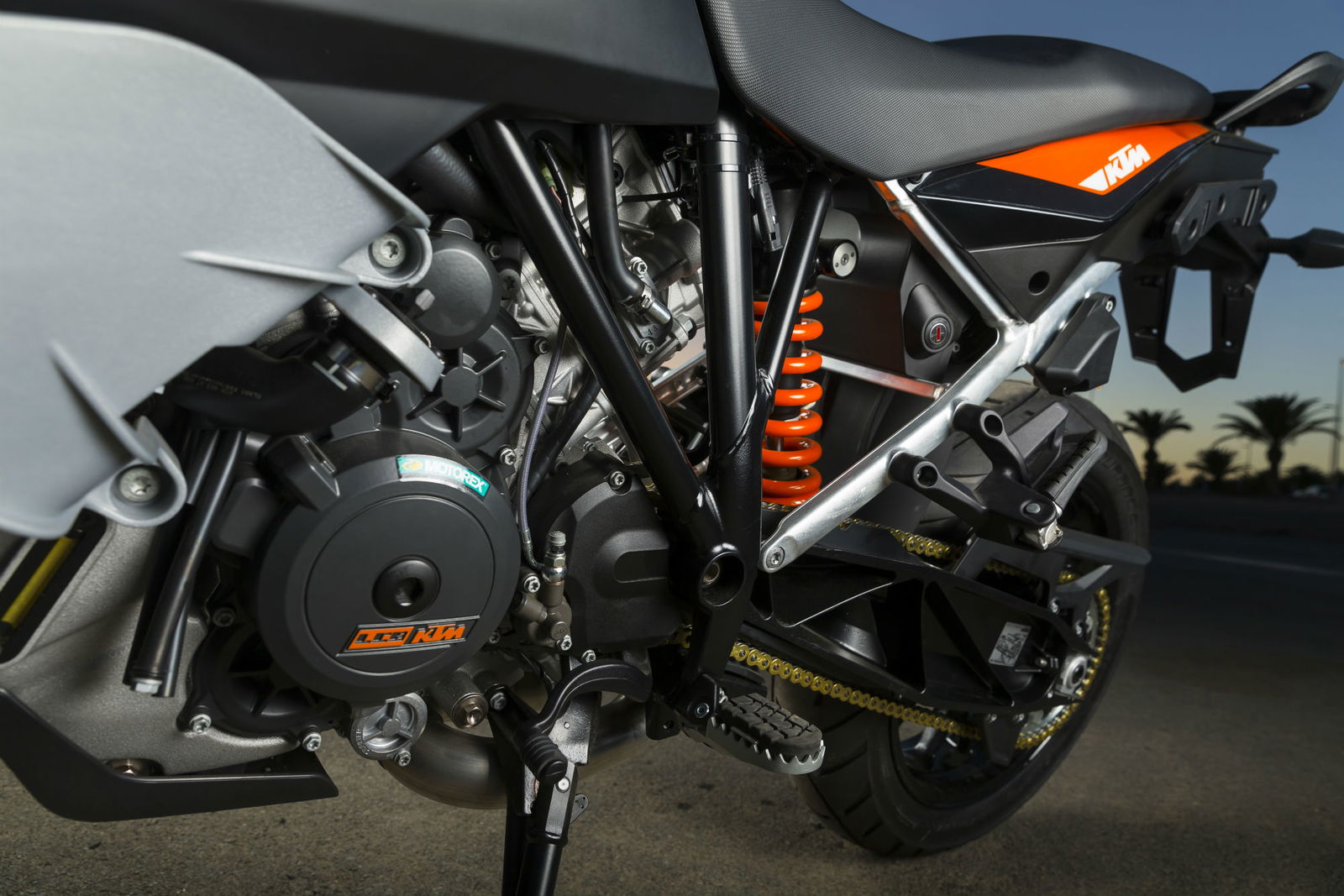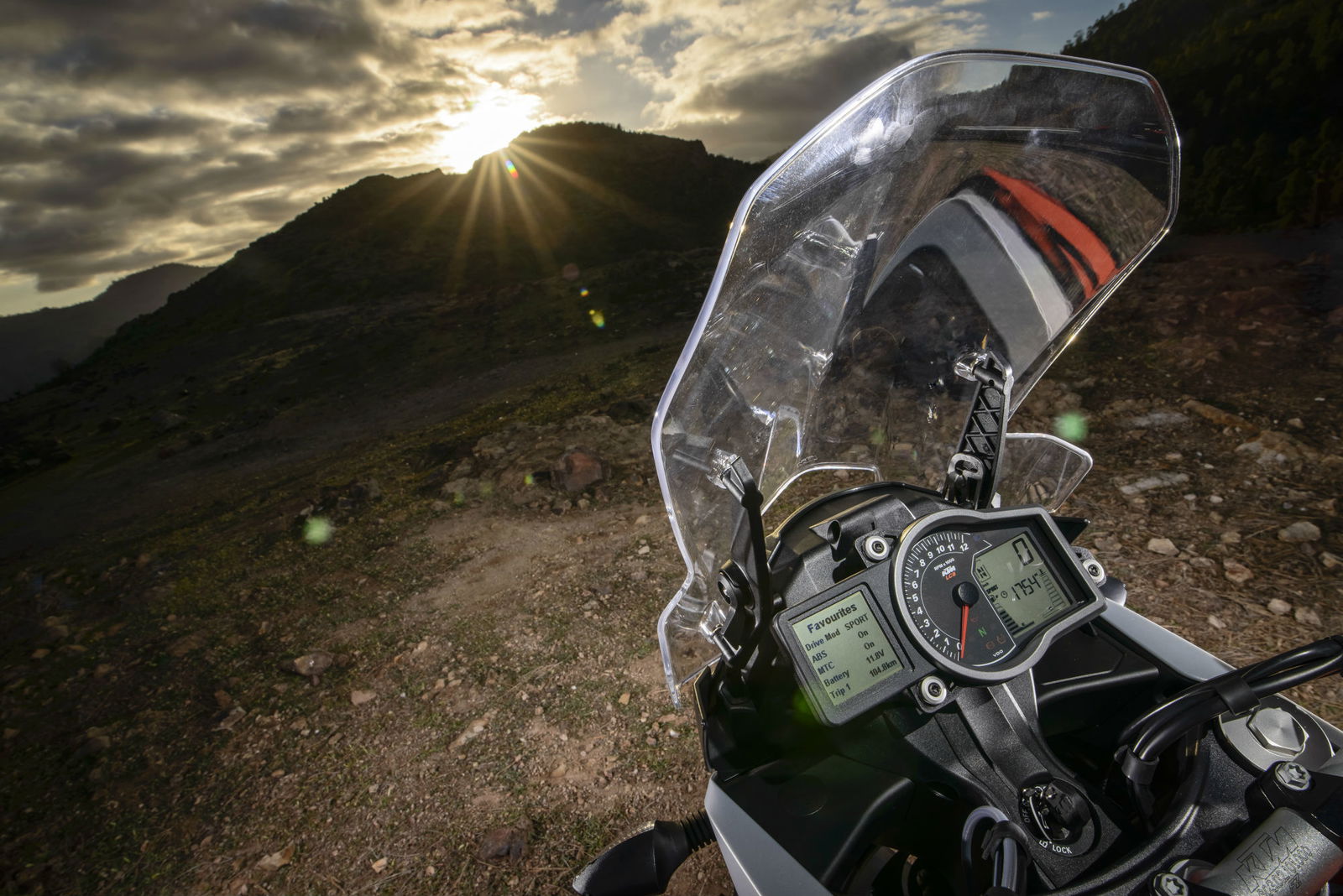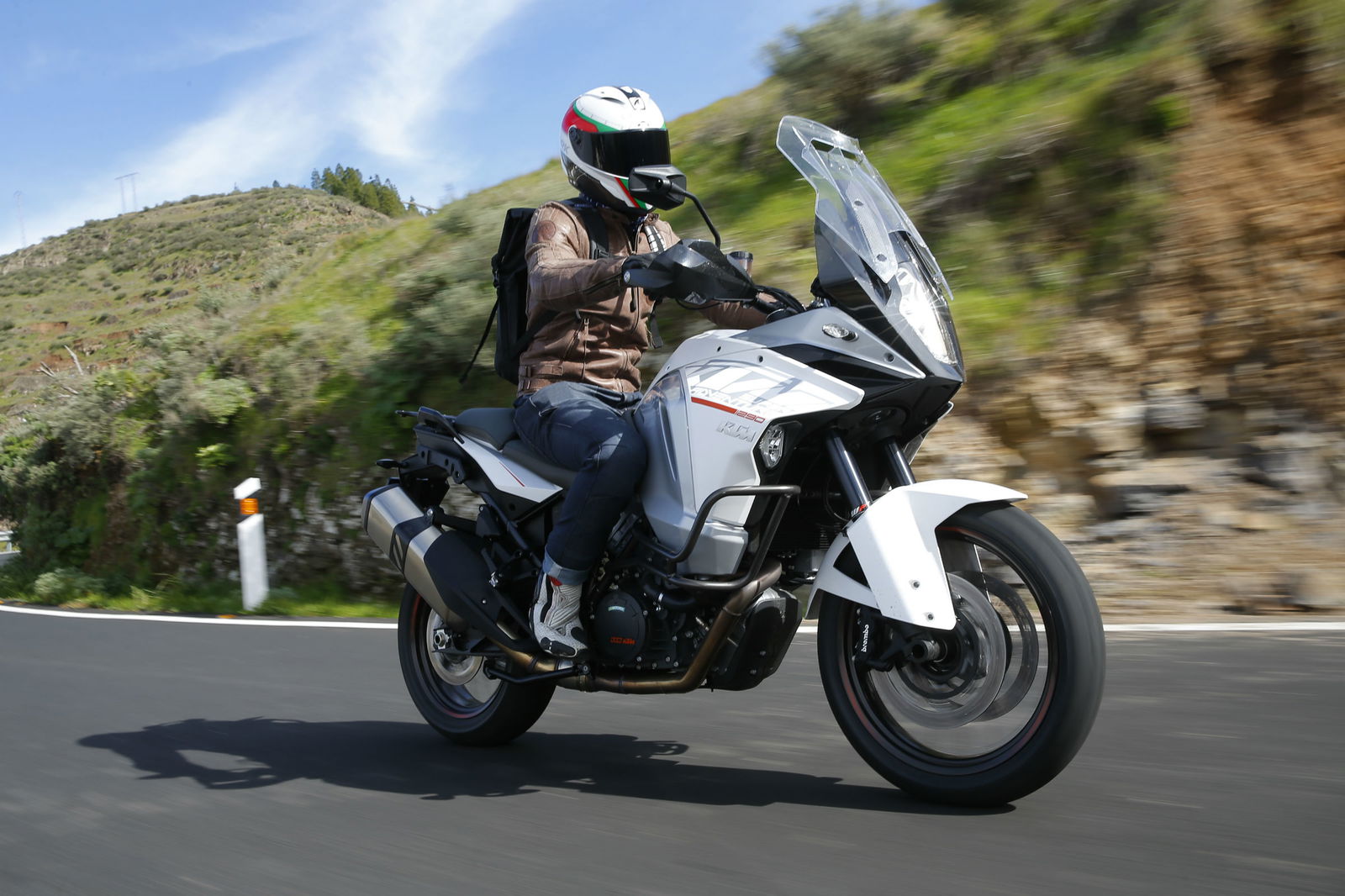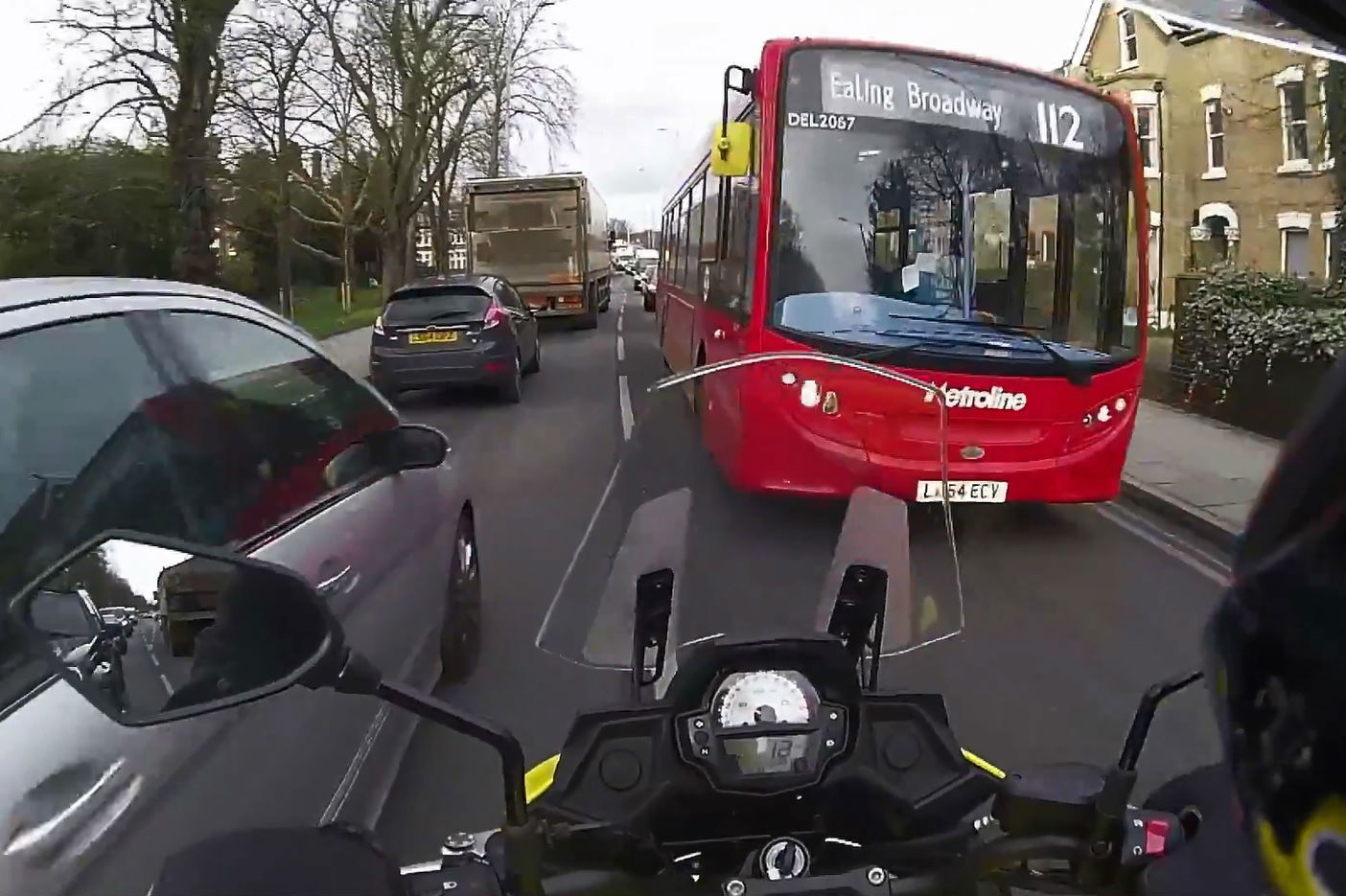First ride: KTM 1050 Adventure review
KTM's new 1050 offers A2 riders a more affordable entry point into the Adventure line-up. But should it be cheaper still?


LAUNCHED alongside the firm's flagship 1290 Super Adventure, KTM's new 1050 Adventure is the latest 'big bike' aimed at riders on a restricted licence.
At 95hp, it sits bang on the power limit for bikes to be restricted to 47hp for A2 licence holders.
It may seem like an odd decision from KTM to have three Adventure models all within 250cc of one another, but with £5,000 separating the 1050, 1190 and new 1290 Adventure, it’s clear that each model caters to a completely different type of rider.
If the 1290 Super Adventure is KTM’s just-give-me-everything-and-I’ll-worry-about-the-bill-later model. The 1050 is branded as the more frugal - yet still more than capable - entry point into the firm’s travel range.
It makes its power using a sleeved down version of the 1190 Adventure’s engine with lighter pistons and a new heavier crankshaft for increased smoothness.
Low down in the rev range, the power curve from the bike’s 1050cc V-twin is almost identical to that produced by the 1190. However, creep past 6,000rpm, and where the 1190 surges towards its 150hp maximum output, the 1050 simply flatlines.
On the road, that translates into an almost diesel-like power delivery - impressive grunt followed by a relatively breathless top end. It’s not a boring engine but there’s very little incentive to explore anywhere near the red line. Short shifting is the key to maintaining pace on the 1050.
As there's an electronic restriction simply limiting throttle opening, I don’t suspect it will be long before buyers begin to uncork the full potential of the bike with a simple ECU retune.
On the topic of electronics, the 1050 gets a ride-by-wire throttle with Sport, Street, Rain and Off-Road riding modes, all of which tweak power delivery and how quickly the traction control system kicks in. Unlike the 1190 and 1290 models, there’s no lean-sensitive Bosch Motorcycle Stability Control (MSC) system so it pays to be slightly more cautious when chucking the 1050 into corners at pace. Still, the traction control feels well integrated and most of the time you only know the system is doing its thing thanks to the bright light that flashes on the dash as the rear tyre silently scrabbles away for grip.
Running almost identical geometry to the 1190 Adventure, including the same trellis frame and swingarm, the 1050 can be ridden fairly aggressively for a big trailie. The long-travel WP front suspension is non-adjustable but felt well damped on both the road and bumpy gravel sections. The same goes for the rear WP shock, which is only adjustable for pre-load.
Despite the ‘Adventure’ moniker, most 1050’s will spend the majority of their life on the road, not least because it uses cast alloys, instead of spoked wheels. As such, it would have been nice to see a more conventional 120/70 profile tyre fitted to the 19-inch front rim; there’s plenty of grip from the stock Metzeler Tourance rubber but the tall and skinny 110/80 profile tyre at the front begins to feel vague as lean angle increases.
The 1050’s brakes are the same as found on the 1190 and 1290 models, but with less weight to bring to a halt, the twin-disc Brembo set-up feels even more powerful. The lever has a light action and delivers a tonne of feedback from the front end. Disengageable ABS comes as standard, with an Off-Road mode that retains ABS function on the front wheel but allows the rear to lock. A feature that’s equally useful for riding off-road as it is for pulling off a few silly skids.
The bike may not get the same cornering ABS system as the larger capacity Adventures, but it gets a raft of useful features like pannier mounts, an adjustable screen, a large 23-litre fuel tank that should see over 200 miles between re-fills, hand guards, a steering damper, LED daytime running lights and an impressive amount of ground clearance. The two-part digital dash and analogue tacho is exceptionally easy to read at speed and the electronics are easy as pie to adjust, even on the fly.
The hydraulic slipper clutch makes town riding a breeze thanks to the effect it has on the clutch lever. As well as stopping rear wheel hop on aggressive downshifts, the unit is built in such a way that softer clutch springs can be used, resulting in a featherlight pull at the lever.
On a less positive note, it was slightly disappointing to find that the size of the right hand side pannier is still compromised by being wrapped around the exhaust. And the standard of finish on the rear subframe left a little to be desired.
However, my biggest gripe with the 1050 Adventure is price. It’s a brilliant bike to ride with oodles of character but at £10,999 it sits at the top end of a fiercely competitive market. BMW’s F800GS Adventure can be had for £9,650 and the new Triumph Tiger 800 XC costs £8,999. The latter comes with all the electronics you find on the 1050, with the addition of fully adjustable suspension, cruise control and more.
A spokesperson for KTM said the bike was originally planned as a sub-£10,000 model. At that price, it would have been much easier to forgive it for its few shortcomings, and the bike might have offered a good-value-for-money introduction to KTM's best-selling range.
Model tested: KTM 1050 Adventure
Price: £10,999
Engine: 1050cc V-twin
Power: 95hp @ 6,200rpm
Torque: 79lbft @ 5,750rpm
Dry weight: 212kg
Tank capacity: 23 litres
Seat height: 850mm
